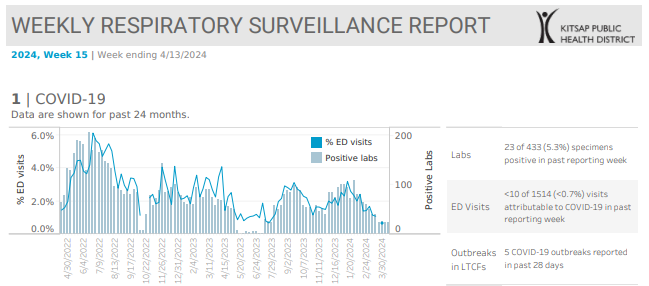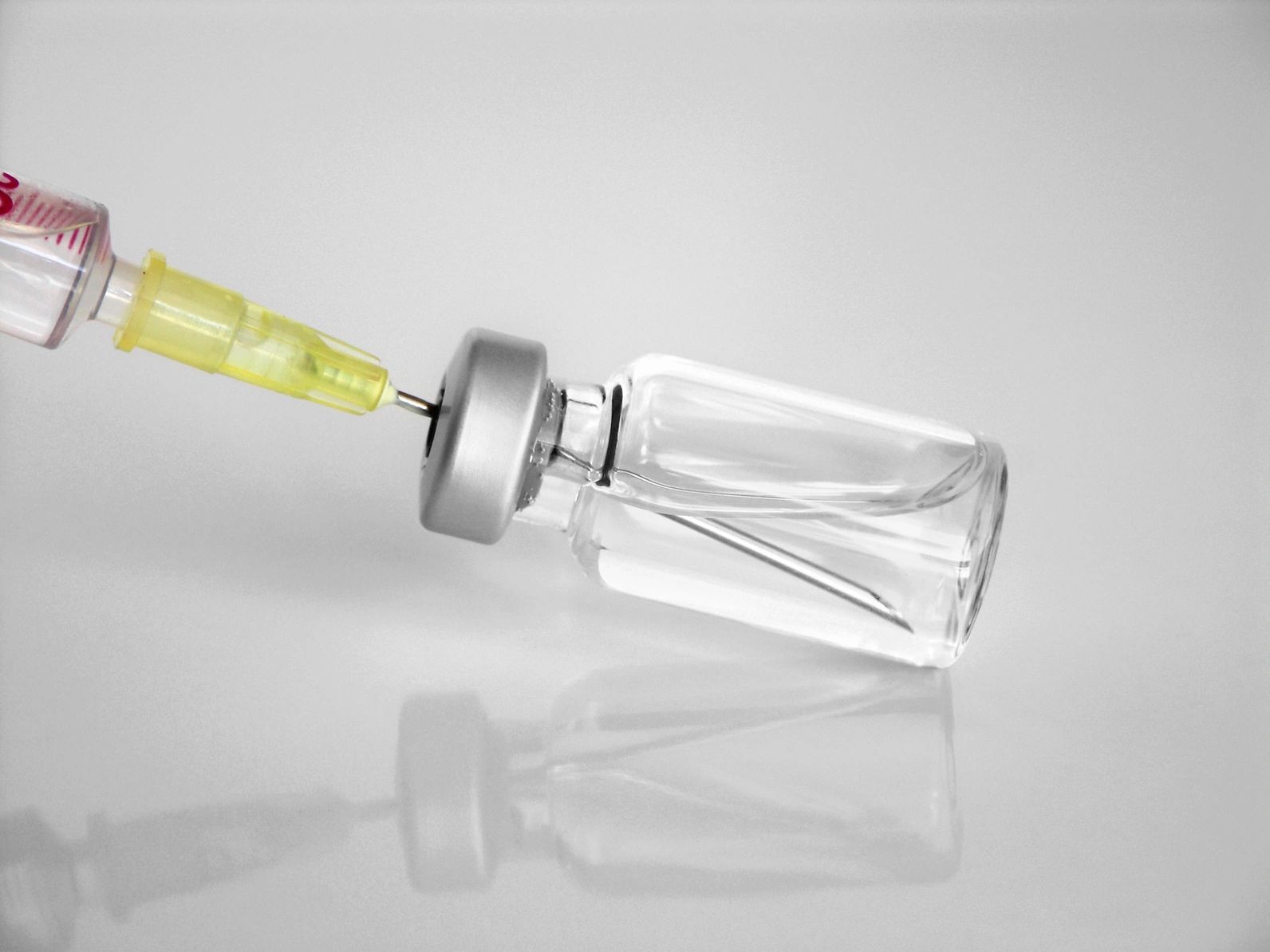-
Kitsap Respiratory Illness Report: April 7-13
Advisory or Update, Communicable Disease and Immunization Update, Communicable Disease Data Report, COVID-19, Health Advisory, Health Alert, Infection Control, Influenza, Influenza Update, News and Alerts, News and Update, Provider Resources, Respiratory Illness Report, Respiratory Illness ReportClick here to access week 15 of the Kitsap Respiratory Illness Report. In the week ending April 13, local indicators for influenza continued to approach baseline levels. Indicators for COVID-19 and respiratory syncytial virus (RSV) remained low. Fewer than 10 emergency department (ED) visits were attributable to any one of the three monitored respiratory viruses (COVID-19,…
-
Health Advisory: COVID-19 Updates for Providers
Advisory or Update, Communicable Disease and Immunization Update, COVID-19, Emerging Diseases and Conditions, Health Advisory, Health Alert, Immunizations, News and Alerts, Notifiable Conditions, Novel Coronavirus, Provider Resources, Vaccine**4/4/2022: Updated to include new vaccine booster information. See red text below for update.** Actions Requested Be aware, the Centers for Disease Control and Prevention (CDC) and Western States Scientific Safety Review Workgroup have endorsed the Food and Drug Administration (FDA) emergency use authorization of a second booster dose of either the Pfizer-BioNTech (Pfizer) or…
-
03/30/22 Health Advisory: CDC endorses second booster dose of mRNA COVID-19 vaccine for certain groups
Advisory or Update, Communicable Disease and Immunization Update, Health Advisory, News and Alerts, Notifiable Conditions, Provider ResourcesRequested actions Be aware, Centers for Disease Control and Prevention (CDC) and Western States Scientific Safety Review Workgroup endorsed Food and Drug Administration’s (FDA’s) emergency use authorization (EUA) of a second booster dose of Pfizer or Moderna COVID-19 vaccines for specific groups. The EUA allows: A second booster dose of Pfizer COVID-19 vaccine at least…
-
Kitsap Respiratory Illness Report: March 13 – March 19, 2022
Click here to access the latest Kitsap Respiratory Illness Report: 3.13.22 – 3.19.22
-
Kitsap Respiratory Illness Report: March 6 – March 12, 2022
Click here to access the latest Kitsap Respiratory Illness Report: 3.6.22 – 3.12.22
-
Kitsap Respiratory Illness Report: February 27 – March 5, 2022
Click here to access the latest Kitsap Respiratory Illness Report: 2.27.22 – 3.5.22
-
Health Advisory: COVID-19 Updates for Providers
Advisory or Update, Communicable Disease and Immunization Update, COVID-19, Emerging Diseases and Conditions, Health Advisory, Health Alert, Immunizations, News and Alerts, Notifiable Conditions, Novel Coronavirus, Provider Resources, VaccineActions Requested Be aware, on March 4, the WA Dept. of Health (DOH) discontinued ordering of the Johnson & Johnson (Janssen) COVID-19 vaccine due to extremely limited inventory at the Centers for Disease Control and Prevention (CDC) in the Washington Immunization Information System (IIS). Providers are encouraged to post and look for excess doses in…
-
03/07/22 Health Advisory: Update on Johnson & Johnson vaccine ordering and guidance for healthcare settings
Advisory or Update, COVID-19, Health Advisory, Immunizations, News and Alerts, Notifiable Conditions, Provider ResourcesRequested actions Be aware, on March 4, Washington State Department of Health (DOH) discontinued ordering Johnson & Johnson COVID-19 vaccine because inventory is very low at Centers for Disease Control and Prevention (CDC) in Washington Immunization Information System (IIS). We encourage providers to post and look for available doses on IIS vaccine advertisement page. Email…
-
Kitsap Respiratory Illness Report: February 20 – February 26, 2022
Click here to access the latest Kitsap Respiratory Illness Report: 2.20.22 – 2.26.22
-
Health Advisory: COVID-19 Updates for Providers
Advisory or Update, Communicable Disease and Immunization Update, COVID-19, Health Advisory, Health Alert, News and Alerts, News and Update, Notifiable Conditions, Novel Coronavirus, Provider Resources, SchoolsActions Requested Be aware, on Feb. 22, Centers for Disease Control and Prevention (CDC) revised its COVID-19 vaccine clinical considerations. An 8-week interval between first and second doses of mRNA COVID-19 vaccine (Moderna and Pfizer) may be optimal for males 12–39 years old to reduce risk of myocarditis and increase efficacy. CDC still recommends a…
-
02/25/22 Health Advisory: COVID-19 Updates for Providers
Requested actions Be aware, on Feb. 22, Centers for Disease Control and Prevention (CDC) revised its COVID-19 vaccine clinical considerations. An 8-week interval between first and second doses of mRNA COVID-19 vaccine (Moderna and Pfizer) may be optimal for males 12–39 years old to reduce risk of myocarditis and increase efficacy. CDC still recommends a…
-
Kitsap Respiratory Illness Report: February 13 – February 19, 2022
Click here to access the latest Kitsap Respiratory Illness Report: 2.13.22 – 2.19-22
-
Kitsap Respiratory Illness Report February 6 – February 12, 2022
Click here to access the latest Kitsap Respiratory Illness Report: 2.6.22 – 2.12.22.








